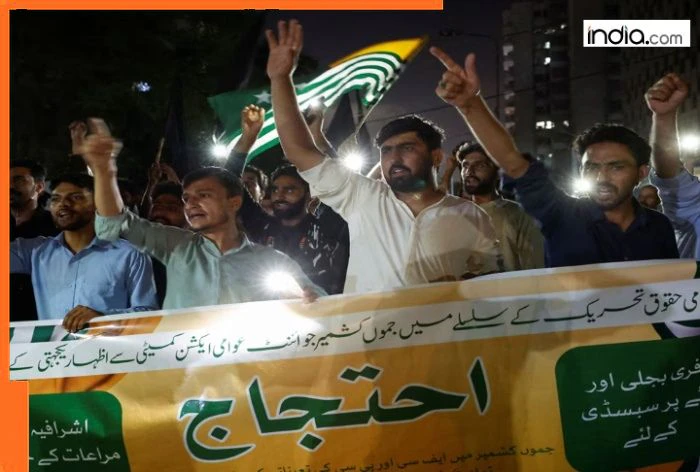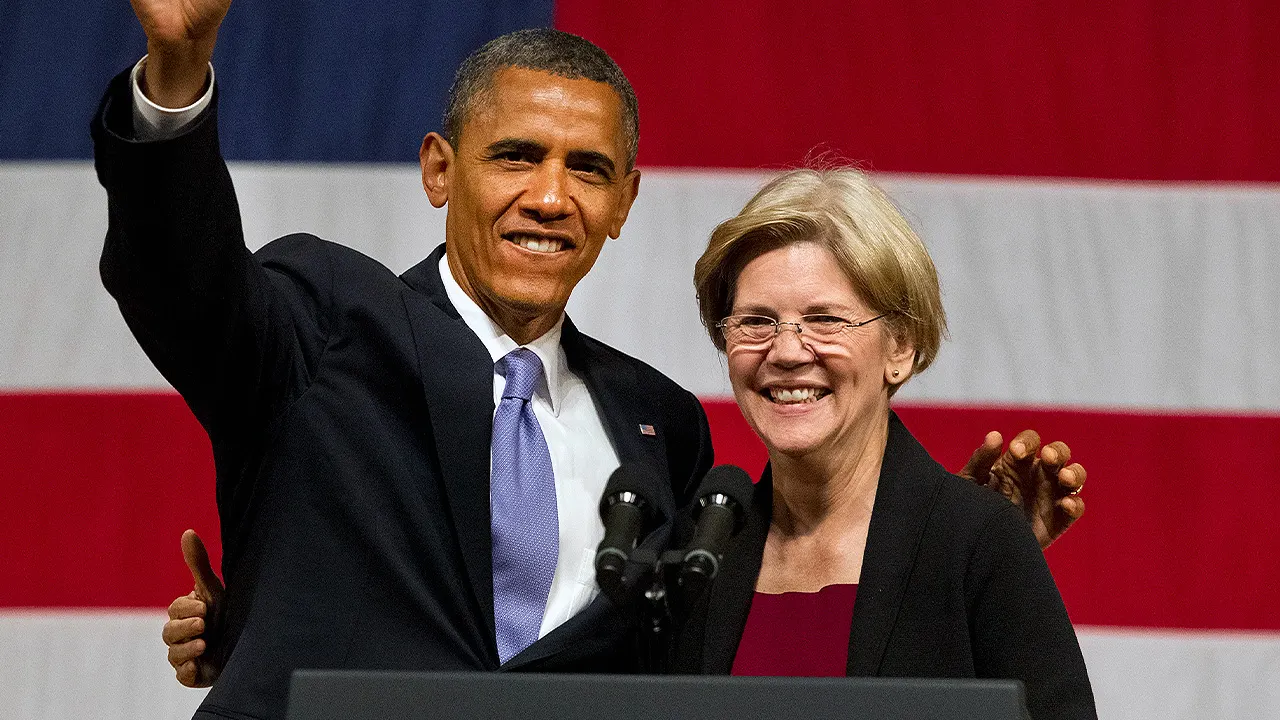By Girish Linganna
Copyright india

In a bold and resolute statement that has sent shockwaves through Islamabad Defence Minister Rajnath Singh declared on September 22 that Pakistan-Occupied Kashmir will return to India without any military action. Speaking to the Indian community in Morocco Singh asserted with confidence that demands for freedom are already rising from within POK itself. PoK will be ours on its own. Demands have started being made in PoK you must have heard the sloganeering he said reflecting a ground reality that Pakistan desperately tries to hide. His words acknowledge what has become increasingly apparent—that 78 years after Pakistans illegal tribal invasion the 5.5 million people living in the 85800 square kilometres of illegally occupied Indian territory are ready to break free from Islamabads colonial grip.
Singhs statement came just days before he addressed the 42nd Indian Coast Guard Commanders Conference in New Delhi on September 29 where he outlined Indias comprehensive security vision. But it was his Morocco declaration—made during the inauguration of Tata Advanced Systems defence manufacturing facility—that captured international attention and renewed hope for the oppressed people of POK. Recalling a similar statement he made five years ago at an Indian Army event in Kashmir Singh said I had then said that we will not need to attack and capture PoK it is anyway ours; PoK itself will say Main bhi Bharat Hoon (I too am India). That day will come. His confidence is not misplaced—it stems from observable ground realities that Pakistan can no longer suppress.
The historical truth is unambiguous. When the British departed the subcontinent in 1947 Maharaja Hari Singh the legitimate ruler of the princely state of Jammu and Kashmir chose to accede to India through a legally binding Instrument of Accession signed on October 26 1947. This makes the entire territory of the former princely state—all 222000 square kilometres—legally and constitutionally part of India. What happened next was nothing short of armed aggression and illegal occupation.
On October 22 1947 Pakistan launched a cowardly attack sending tribal raiders backed by its regular army to invade and capture Indian territory. These raiders committed horrific atrocities—massacring civilians abducting women and destroying property. The Maharaja appealed to India for help and Indian troops flew in to defend our territory. But by the time the United Nations brokered a ceasefire on January 1 1949 Pakistan had illegally occupied approximately 85800 square kilometres of Indian land. This is not Azad Kashmir as Pakistan falsely claims—it is occupied Indian territory held by force in violation of international law.
This illegally occupied Indian territory comprises two distinct regions that rightfully belong to India. The first is the area Pakistan calls Azad Jammu and Kashmir spread across 13300 square kilometres and including ten districts: Muzaffarabad Mirpur Kotli Bhimber Rawalakot (Poonch) Bagh Neelum Sudhnoti Haveli and Hattian Bala. The capital Muzaffarabad sits at the confluence of the Jhelum and Neelum rivers in what should be Indian territory. This region is bordered by Indian-administered Jammu and Kashmir to the east along the Line of Control—a line that represents Pakistans illegal occupation not an international border.
The second region is Gilgit-Baltistan spanning a massive 72500 square kilometres with fourteen districts across two divisions. This strategically vital area borders Indian-administered Jammu and Kashmir to the southeast Afghanistans Wakhan Corridor to the northwest Chinas Xinjiang region to the northeast and the POK region to the south. It is home to some of the worlds highest peaks including K2 at 8611 metres and contains the massive Siachen Glacier. Pakistan has even illegally ceded portions of this Indian territory—the Shaksgam Valley—to China giving away land that doesnt belong to Pakistan in the first place.
Pakistan presents these occupied Indian territories as self-governing but this is a blatant lie designed to legitimize illegal occupation. In the area they call Azad Jammu and Kashmir Pakistan has created a puppet government with a President and Prime Minister who are mere figureheads. There is a 53-member assembly with 45 general seats and 8 reserved seats but these representatives have no real power. Every major decision—from budgets to legislation to security—is controlled by Pakistans Ministry of Kashmir Affairs in Islamabad. Elections are widely reported to be rigged with candidates who support true freedom or reunion with India systematically barred from contesting or arrested on fabricated terrorism charges.
Gilgit-Baltistans situation is even more shameful. Since 2009 this region has had a Chief Minister and a 33-member legislative assembly—24 directly elected seats 6 reserved for women and 3 for technocrats. Yet real power rests entirely with the Governor appointed by Pakistans Prime Minister. The people of Gilgit-Baltistan cannot vote in Pakistans national elections have no representation in Pakistans parliament and receive far less funding than Pakistans provinces. They are treated as second-class citizens in their own homeland denied basic constitutional rights while Pakistan plunders their resources. Protests demanding provincial status or basic rights are brutally suppressed by Pakistani security forces.
What makes Pakistans occupation even more unconscionable is the systematic looting of resources that rightfully belong to the Indian people of this region. The rivers that carve through these Indian mountains—the Jhelum Neelum and Indus—generate massive amounts of hydroelectric power that Pakistan steals. The Mangla Dam on the Jhelum River generates 1000 megawatts. The Neelum-Jhelum Hydroelectric Project generates 969 megawatts. The Diamer-Bhasha Dam currently under construction will generate 4500 megawatts when completed. Add the Jagran Hydroelectric Projects 96 megawatts and dozens of smaller projects and Pakistan is stealing thousands of megawatts of electricity from Indian resources. Meanwhile the people living in POK—Indians denied their rightful nationality—suffer frequent power blackouts while Lahore and Karachi light up with stolen electricity.
The mineral wealth Pakistan is plundering from Indian territory is staggering. Gilgit-Baltistans mountains contain vast deposits of gold in Skardu and Diamir copper in Ghizer precious gemstones including rubies emeralds and aquamarine significant uranium reserves and extensive marble and granite quarries. In the occupied areas of Jammu and Kashmir Pakistan is extracting bauxite from Mirpur coal from Kotli and Sudhnoti limestone throughout the region china clay from Bagh and iron ore from multiple districts. These are Indian resources being stolen by an occupying power. Mining operations are controlled by companies with direct ties to Pakistans military establishment and not a single rupee reaches the local population who are the rightful owners of this wealth as Indian citizens.
The systematic exploitation continues with forestry and agriculture. Pakistan logs valuable timber—deodar pine fir and walnut trees—from Indian forests. The agricultural produce of Indian soil—wheat maize rice apples walnuts apricots cherries and saffron—enriches Pakistani traders while local farmers remain impoverished. Even the tourism potential of these spectacular Indian landscapes is exploited with most revenue flowing to Pakistani operators while local communities see nothing.
The 5.5 million Indian citizens trapped in POK—approximately 4 million in the occupied Jammu and Kashmir region and 1.5 million in Gilgit-Baltistan—suffer under this illegal occupation. These are our people speaking our languages sharing our culture and yearning to return to the Indian nation. In the occupied Jammu and Kashmir region people speak Pahari and Gojri languages closely related to those in Indian Jammu and Kashmir. In Gilgit-Baltistan the Balti Shina Burusho Wakhi and Khowar-speaking communities have historical and cultural ties to India. Most work as farmers or herders in mountain villages with minimal access to education and healthcare. Unemployment runs as high as 30 percent in some areas because Pakistan has deliberately kept the region underdeveloped to maintain control.
This is why anger against Pakistani occupation is reaching a boiling point. The people of POK feel betrayed and colonized. Pakistan promised them freedom from Dogra rule in 1947 but instead installed its own military dictatorship over Indian territory. Groups like the Jammu Kashmir Liberation Front openly demand azadi—not union with Pakistan but freedom from Pakistani occupation. Many in POK speak openly of their desire to return to India recognizing that their future lies with the worlds largest democracy not with a failed state that has brought them nothing but poverty and repression.
Pakistan responds to this growing freedom movement with brutal force. Protests are crushed with live ammunition. Activists demanding basic rights or expressing support for India simply disappear—extrajudicial killings and enforced disappearances are routine tools of Pakistani occupation. Those who dare speak of independence or reunion with India face arrest under Pakistans draconian Anti-Terrorism Act. The Pakistani military maintains a heavy presence throughout POK treating the local population as enemy subjects rather than citizens. International human rights organizations have documented systematic abuses but Pakistan prevents independent observers from accessing the occupied territories.
India has consistently maintained that POK is illegally occupied Indian territory and that the people there have the inherent right to determine their own future. The Indian Parliament unanimously passed a resolution in 1994 reaffirming that POK is an integral part of India. Unlike Pakistan which uses military force to suppress dissent India advocates for the democratic right of self-determination through the UN-promised plebiscite that Pakistan has blocked since 1948. Pakistan knows it would lose any fair referendum which is why it refuses to allow one.
The situation in Gilgit-Baltistan deserves special attention. Unlike even the occupied Jammu and Kashmir region which Pakistan at least pretends to treat separately Gilgit-Baltistan is administered as a colonial possession with virtually no autonomy. Its residents cannot vote in Pakistans national elections and have no representation in Pakistans parliament despite being subject to Pakistani laws. They receive far less funding than Pakistans provinces for education healthcare and infrastructure. For years people in Gilgit-Baltistan have demanded basic rights but Pakistan denies them even this modest request because granting provincial status would legitimize Pakistans illegal occupation in international law.
The strategic importance of liberating POK cannot be overstated. By reclaiming Gilgit-Baltistan India would secure control of the Karakoram Highway that currently enables illegal China-Pakistan collusion on Indian territory. India would regain access to Afghanistan via the Wakhan Corridor opening new strategic possibilities. India would restore its upstream control of waterways that Pakistan has been manipulating in violation of the Indus Waters Treaty. Most importantly India would liberate 5.5 million of our own people who have suffered under Pakistani occupation for more than seven decades.
What makes the current moment particularly significant is the growing international recognition of Pakistans brutality in POK and the rising voice of freedom from within. Singhs statements have found strong support beyond Indias borders. Baloch leaders whose own region faces similar exploitation by Pakistan immediately endorsed his words. The Republic of Balochistan issued an official statement saying We stand shoulder to shoulder with India in this rightful pursuit. Prominent Baloch leader Mir Yar Baloch expressed support noting that Singhs commitment to reclaim POK would inspire Baloch Sindhi and Pashtun nations in their struggle to free themselves from Pakistans oppressive regime. The world is beginning to see Pakistan for what it truly is—a failing state that survives by occupying the lands of others and suppressing freedom movements through military force.
Recent events have demonstrated Indias resolve and capability. Following the Pahalgam terrorist attack in April 2025 where Pakistan-based terrorists killed 26 innocent Indian civilians India launched Operation Sindoor on May 7—the most extensive and successful military strikes since 1971. Indian forces struck terrorist infrastructure deep inside Pakistan with precision demonstrating that India has both the capability and the will to defend its interests. Singh later clarified in Parliament that military operations ceased only after Indias political and military objectives were fully achieved firmly rejecting claims of third-party mediation or external pressure. India acted on its own terms in its own time achieving its objectives completely.
The contrast between India and Pakistan could not be starker. India is the worlds largest democracy a rising economic powerhouse and a responsible global stakeholder. Pakistan is a failing state economically bankrupt internationally isolated and notorious for exporting terrorism. India offers the people of POK development democracy dignity and prosperity. Pakistan offers only poverty repression and endless exploitation. The choice is obvious.
Recent protests in Muzaffarabad and other cities across POK confirm Singhs assessment that change is coming. When thousands risk tear gas detention torture and death simply to demand basic rights and freedom from Pakistani occupation we must recognize that the occupation is unsustainable. Singhs prediction that POK will return to India without military action is based on watching these very protests where people chant Hum kya chahte? Azadi!—What do we want? Freedom!—and increasingly add Bharat ke saath!—With India! When the electricity generated from their rivers doesnt light their homes but powers Pakistani cities when the minerals from their mountains dont build their schools but enrich Pakistani generals when the profits from their forests dont feed their children but fill Pakistani coffers the injustice becomes unbearable.
India must continue to support the freedom movement in POK while preparing for the inevitable reunification. This means diplomatically isolating Pakistan internationally for its illegal occupation supporting civil society groups working for freedom in POK documenting and publicizing Pakistans human rights abuses and maintaining military readiness to protect our people when they rise up against their occupiers. It also means preparing administratively for the reintegration of POK into the Indian union ensuring that when reunification comes we can immediately deliver development governance and prosperity to our long-suffering compatriots.
The moral case is unambiguous. These are Indian citizens living on Indian territory illegally occupied by a hostile neighbor that has brought them nothing but misery for 78 years. The legal case is clear. The Instrument of Accession makes the entire territory of Jammu and Kashmir legally part of India and Pakistans occupation is a violation of international law. The strategic case is compelling. Liberating POK would eliminate a major source of terrorism secure vital water resources check Chinese expansion and restore Indias territorial integrity. The humanitarian case is overwhelming. Five and a half million people deserve liberation from Pakistani colonial oppression.
Singh is absolutely right that the day will come when POK returns to India. The question is not if but when. The people of POK are already making their choice clear through their protests and their slogans. They see the prosperity in Indian Jammu and Kashmir—the development the democratic governance the educational opportunities the economic growth. They contrast this with Pakistans brutal occupation systematic exploitation and deliberate underdevelopment of their region. They know which side offers them a future and which side offers only continued suffering.
As India celebrates its rise as a global power we must remember that our national mission remains incomplete while even one square kilometre of Indian territory remains under illegal occupation. The 85800 square kilometres of POK—with its ten districts in the occupied Jammu and Kashmir region and fourteen districts in Gilgit-Baltistan its rivers generating thousands of megawatts that should power Indian development its mountains hiding billions in mineral wealth that belongs to the Indian people its forests and farms and breathtaking scenery that should contribute to Indias prosperity—all of this must return to the Indian union where it rightfully belongs.
The 5.5 million Indians living under Pakistani occupation deserve to enjoy the freedoms opportunities and dignity that their compatriots in the rest of India enjoy. Their 53-member puppet assembly and 33-member powerless legislature should be replaced with genuine democratic representation in the Indian Parliament. Their resources should benefit them and contribute to Indias growth not enrich Pakistani military elites. Their children should study in world-class Indian institutions not be denied quality education by Pakistani negligence. Their sick should be treated in modern Indian hospitals not be left to suffer. Their entrepreneurs should participate in Indias economic boom not be stifled by Pakistani corruption.
The reunification of POK with India is inevitable. History is on our side. Justice is on our side. The people of POK are on our side. International opinion is shifting in our favor as Pakistans reputation as a terrorist state becomes undeniable. Singhs confident prediction reflects a clear-eyed assessment of ground realities. The freedom movement within POK grows stronger every day. Pakistans economic collapse makes it increasingly unable to sustain its occupation. Chinas growing dominance over Pakistan means even Islamabad is losing sovereignty making it impossible for Pakistan to maintain control over occupied Indian territory indefinitely.
India must therefore prepare for the liberation and reintegration of POK not as a distant dream but as an approaching reality. Our military must maintain operational readiness. Our diplomats must continue building international support. Our intelligence agencies must maintain contact with freedom fighters in POK. Our administrators must plan for the massive development effort that reunification will require. Most importantly our political leadership must maintain the resolve that Singh has demonstrated—making clear that POK is non-negotiable Indian territory that will return to the Indian union.
Until that glorious day arrives we stand in solidarity with our 5.5 million compatriots suffering under Pakistani occupation. We hear their calls for freedom. We see their courage in protesting despite brutal repression. We recognize their longing to return to the Indian nation. And we pledge that India will not rest until every square kilometre of illegally occupied Indian territory is liberated and every Indian citizen trapped under Pakistani rule is reunited with the motherland.
The wait is nearly over. The day Singh speaks of—when POK itself declares Main bhi Bharat Hoon—is approaching. When it arrives India will welcome home its lost territories and its long-suffering people. We will bring development where Pakistan brought exploitation democracy where Pakistan imposed dictatorship and prosperity where Pakistan enforced poverty. We will prove once and for all that Indias democratic pluralistic and progressive model offers a far superior future than Pakistans failed experiment ever could.
The liberation of POK is not just a territorial imperative—it is a moral obligation a legal necessity and a strategic priority. It is time.
(The author Girish Linganna is an award-winning science communicator and a Defence Aerospace & Geopolitical Analyst. He is also the Managing Director of ADD Engineering Components India Pvt. Ltd. a subsidiary of ADD Engineering GmbH Germany.)



